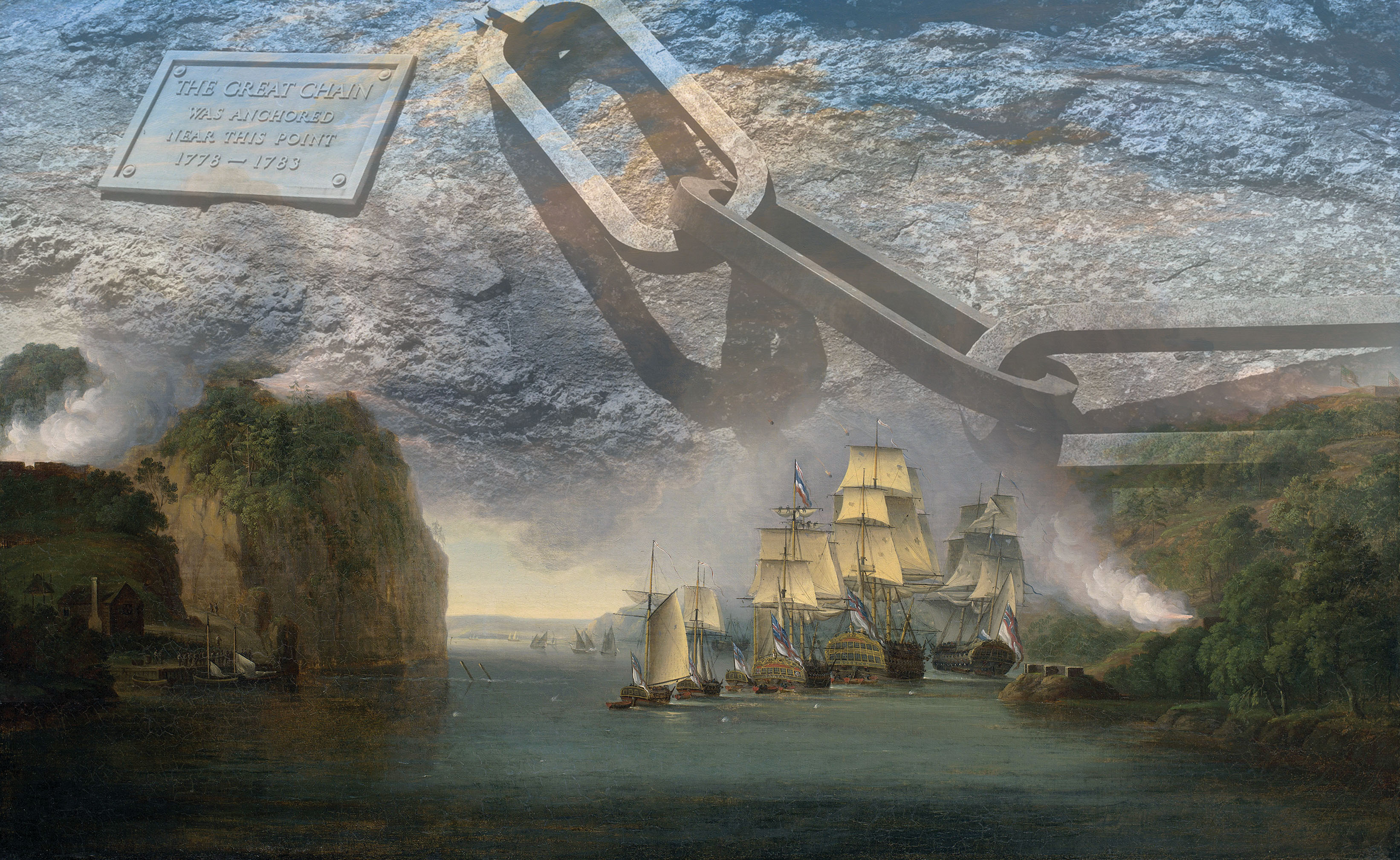From the outset of the American Revolutionary War it was apparent to the combatant armies that control of the Hudson River Valley would in all likelihood determine the outcome of the conflict. Certainly British domination of the valley would effectively sever New England—the hotspot of the conflict—from the other colonies.
It was equally obvious the river itself was the key to holding the valley. John Adams termed it “a kind of key to the whole continent.” In 1776 the British seized the seaport of Manhattan (see related story, P. 18), driving the Continental Army up the valley and opening the river to invasion. Royal Navy warships wasted no time in availing themselves of it.
To halt the progress of British men-of-war, the Patriots first constructed and submerged chevaux-de-frise—an array of sharpened logs intended to pierce the hulls of enemy vessels—between Forts Washington and Lee, in the Hudson off the northwest end of Manhattan. Naively, the builders left a gap for the safe passage of American ships. A local Tory got wind of the gap and informed the British, who took full advantage. Skirting the barrier, they captured both Patriot forts in mid-November 1776.
The colonists tried again, installing a chain and floating log boom some 35 miles upriver, just above present-day Bear Mountain Bridge. They strung it from newly built Fort Montgomery, on the west bank, to a peak opposite known as Anthony’s Nose. However, on Oct. 6, 1777, the British marched overland to simultaneously seize neighboring Forts Montgomery and Clinton, then dismantled the chain and boom. With the river open before them, they raided 40 miles farther upriver, as far north as Kingston.
In 1778 the colonists made their third attempt at a blockade. They chose a spot beneath West Point, a prominence 5 miles north of Fort Montgomery, where the Hudson narrows and forms an S-curve, and hills on either bank afford a clear overview of the river.
American Brig. Gen. James Clinton, reporting on the viability of a barrier there, considered it ideal, “as it is not only the narrowest part of the said river, but best situated on account of the high hills contiguous to it, as well on the west as east side of the river, which cover those parts, so that without a strong easterly wind or the tide no vessel can pass it; and the tide on said part of the river is generally so reverse that a vessel is usually thrown on one side of the river or the other, by means whereof such vessels lay fair and exposed.”
Put simply, a stalled vessel would be open to fire from Patriot guns on both sides of the river. Gen. George Washington considered it the most important strategic position in the colonies and later moved his headquarters there.
That spring Patriot work crews ran a truly Brobdingnagian chain supported by rafts of huge logs from the shore at West Point east to Constitution Island. Forged in a New Jersey foundry and assembled in Warwick, N.Y., a day’s ride west of West Point, the chain weighed upward of 75 tons. Each link, varying from 19 inches to more than 3 feet long, weighed more than 100 pounds. The Great Chain, as history has dubbed it, took six weeks to forge and assemble and was floated downriver on rafts to West Point in April.
This time the chain—fronted by an impressive log boom—did halt enemy traffic upriver, proving a source of great frustration to Lt. Gen. Sir Henry Clinton, William Howe’s replacement as British commander in North America. The next spring, when Clinton agreed to compensate Patriot turncoat Maj. Gen. Benedict Arnold with a British generalship and £20,000 sterling in exchange for the betrayal of West Point, one of the traitor’s major selling points was a promise to weaken the Great Chain. Thankfully for the Patriots, their scheme was exposed.
Several links of the Great Chain remain on permanent display on the grounds of the U.S. Military Academy at West Point. They overlook the river that nearly two and a half centuries ago helped determine the fate of a nation. MH
This article appeared in the November 2020 issue of Military History magazine. For more stories, subscribe here and visit us on Facebook:






